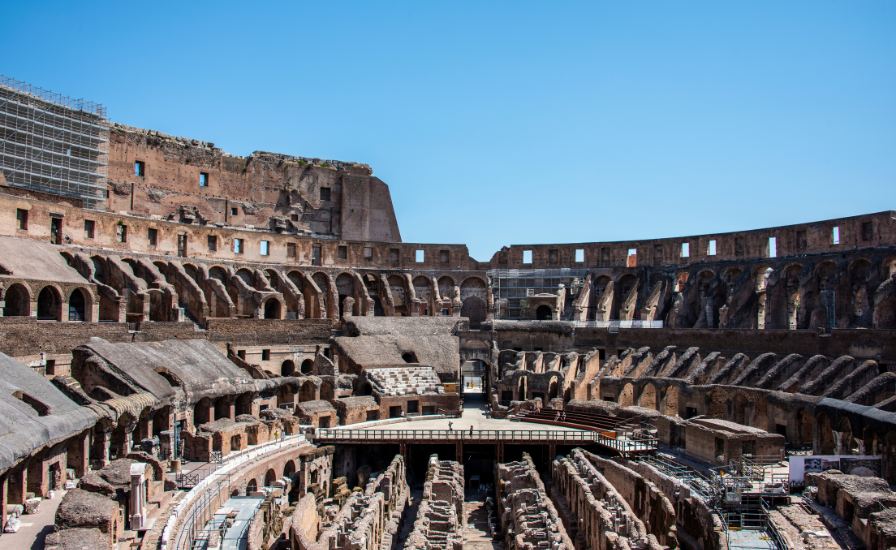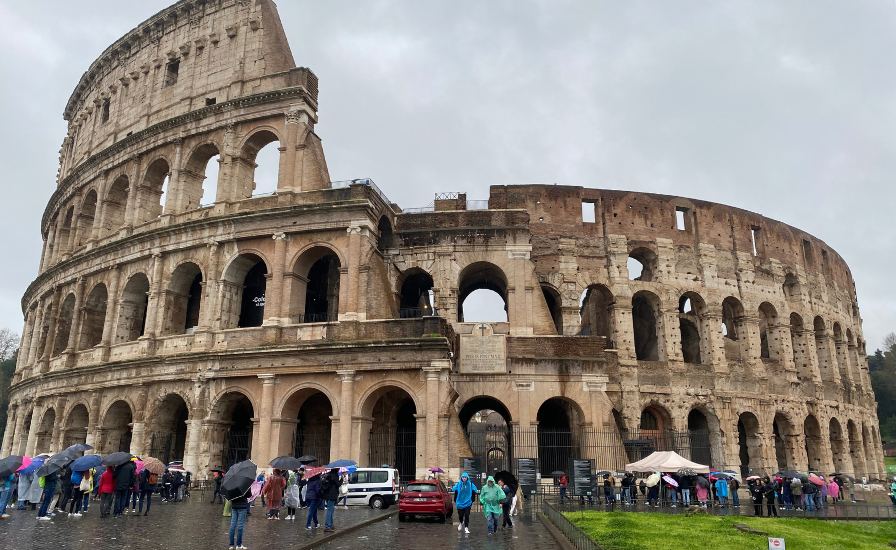Tips for Visiting the Colosseum
If you're planning to visit the Colosseum, here are some helpful tips to make your experience more enjoyable:
Book Tickets in Advance: The Colosseum is a major tourist attraction, so it's advisable to book your tickets online in advance to avoid long queues.
Arrive Early or Late: To avoid the crowds, consider visiting early in the morning or later in the afternoon. This will give you more space to explore and take photos.
Consider an audio Guided Tour: An audio guided tour can enhance your visit by providing in-depth information and context about the Colosseum's history.
Wear Comfortable Shoes: The Colosseum involves a lot of walking and climbing, so be sure to wear comfortable shoes to make your exploration more enjoyable.
Bring Water and Snacks: While there are vending machines, it's a good idea to bring your own water and snacks to stay hydrated and energized during your visit.
Visit Other Nearby Sites: The Colosseum is part of a larger archaeological area that includes the Roman Forum and Palatine Hill. Consider purchasing a combined ticket to explore these additional sites as part of your Rome sightseeing.
Unique Architectural Features
The Roman Colosseum is renowned for its architectural innovation. The structure's design and engineering were ahead of their time, allowing it to accommodate large crowds and various types of events. The Colosseum's outer walls consist of travertine limestone, while the inner walls are made of brick and concrete. The use of concrete in construction was groundbreaking, providing strength and flexibility to the structure.
One of the most interesting architectural features is the system of passageways and tunnels beneath the arena, known as the hypogeum. These tunnels allowed gladiators, animals, and stage props to be moved discreetly before entering the arena. This intricate system enabled complex events, such as mock naval battles and dramatic reenactments.
The Colosseum's Impact on Modern Architecture
The Colosseum's design has had a lasting impact on modern architecture. Its elliptical shape and tiered seating influenced the design of contemporary stadiums and amphitheaters. Architects and engineers continue to study the Colosseum's structure to understand how the ancient Romans achieved such feats without modern technology. This connection between ancient and modern architecture is one of the surprising facts about the Colosseum, illustrating its enduring legacy.
Cultural Significance and Symbolism

The Colosseum holds deep cultural significance. It represents the power and grandeur of the Roman Empire while also symbolizing the darker aspects of ancient society, such as gladiatorial combat and public executions. In recent years, the Colosseum has become a symbol of peace and reconciliation. The Vatican has used it as a site for religious ceremonies, including the annual Stations of the Cross during Good Friday, emphasizing themes of forgiveness and redemption.
The Colosseum's Role in Roman Society
Understanding the Colosseum's role in Roman society provides insight into the lives of ancient Romans. The amphitheater was a center for entertainment, drawing thousands of spectators for gladiatorial contests, animal hunts, and other spectacles. These events were not only meant for entertainment but also served political and social purposes. Emperors used the Colosseum to demonstrate their power and gain favor with the public by hosting elaborate events, often at great expense.
Preservation and Restoration Efforts
Over the centuries, the Colosseum has undergone significant damage due to natural disasters and human activity. Earthquakes in the Middle Ages caused parts of the structure to collapse, and it was later used as a source of building materials for other projects in Rome. However, extensive preservation and restoration efforts have been made to ensure the Colosseum's longevity.
These efforts involve repairing and reinforcing the structure, as well as restoring key architectural elements. The Italian government, along with various international organizations, has dedicated resources to preserving this historical landmark. These ongoing efforts are crucial for maintaining the Colosseum's status as a UNESCO World Heritage site.
Planning a Rome City Tour

When planning a Rome city tour, the Colosseum is often at the top of the list of must-see attractions. To make the most of your visit, consider combining it with other nearby sites and landmarks. A Rome self-guided tour allows you to explore at your own pace, while a guided tour provides deeper insights into the history and culture of the city.
Rome's historic center is compact and walkable, allowing you to see multiple attractions in one day. Beyond the Colosseum, consider visiting the Roman Forum, Palatine Hill, and the Pantheon. If you have more time, take a stroll to the Trevi Fountain and the Spanish Steps, two iconic spots in the heart of Rome.
Enjoying Rome's Culinary Scene
After exploring the Colosseum and other historic sites, take time to enjoy Rome's vibrant culinary scene. Rome is known for its traditional dishes like pasta carbonara, amatriciana, and cacio e pepe. Visit local trattorias and pizzerias to experience authentic Roman cuisine. Don't forget to try gelato from one of the many artisanal gelaterias, offering a variety of flavors.
Conclusion
The Roman Colosseum is an architectural marvel with a rich and complex history. These six surprising facts about the Colosseum offer a deeper understanding of the structure's versatility, engineering ingenuity, and cultural significance. Whether you're interested in ancient Roman history, architecture, or simply want to experience a world-famous landmark, the Colosseum is a must-visit destination. With the right planning and tips, you can make the most of your visit and discover the many stories this iconic site has to offer.









